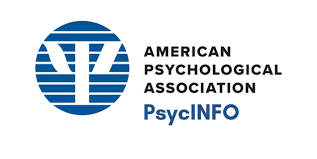The Development of a Successful Intelligence Training Package Aimed at Reducing High-Risk Behaviors in Adolescents
Keywords:
Successful Intelligence, Training Package, High-Risk Behaviors, AdolescentsAbstract
Objective: The aim of the current research was to develop a successful intelligence training package focused on reducing high-risk behaviors specifically for female students engaged in high-risk behaviors.
Methods and Materials: This study, in its content analysis section, utilized the qualitative content analysis method of Hsieh and Shannon (2005), and in the package development section, followed the package development methodology of Yousefi and Golparvar (2023). The environment of this research included all texts related to high-risk behaviors and Sternberg's (2019) successful intelligence. The method for selecting texts was purposefully from among these texts over the last ten years, with the number of texts based on the principle of data saturation. The method of data collection was through line-by-line study of texts, seeking answers to questions related to the objective and content of the successful intelligence package aimed at reducing high-risk behavior.
Findings: The results of data analysis using Hsieh and Shannon's (2005) conventional content analysis method revealed that high-risk behavior has three dimensions: 1) causes of high-risk behavior with nine main concepts (psychological distress, feelings of rejection, adolescent changes, peer pressure, cultural factors, social factors, psychological factors, lack of education and awareness, and family factors); 2) manifestations of high-risk behavior with three main concepts (anger and violence, addiction, incompatible sexual behaviors); and mechanisms for reducing high-risk behavior (individual interventions and systemic interventions). These results for successful intelligence texts showed that successful intelligence contains two dimensions: 1) the nature of intelligence with five concepts (successful intelligence in the individual dimension, successful intelligence in the social dimension, intelligence outcomes, types of intelligence, upstream intelligence processes) and 2) the dimension of strategies for achieving successful intelligence with four concepts (analytical intelligence, practical intelligence, wisdom, and creative intelligence). In the package development section, the hidden goal of this package was to increase cognitive maturity through awareness and skill enhancement with the help of successful intelligence strategies. This was done using the package development method of Yousefi and Golparvar (2023), where categories from both analyses were integrated and synthesized.
Conclusion: The results of this integration led to an eight-session educational package aimed at reducing high-risk behavior, with strategies derived from the theory of successful intelligence. Finally, the educational package was validated through inter-rater agreement coefficients and evaluated by specialists, indicating content validation.
Downloads

Downloads
Additional Files
Published
Issue
Section
License
Copyright (c) 2024 Zahra Baramake (Author); Mahboubeh Sadat Fadavi (Corresponding Author); Zahra Yousefi (Author)

This work is licensed under a Creative Commons Attribution-NonCommercial 4.0 International License.














